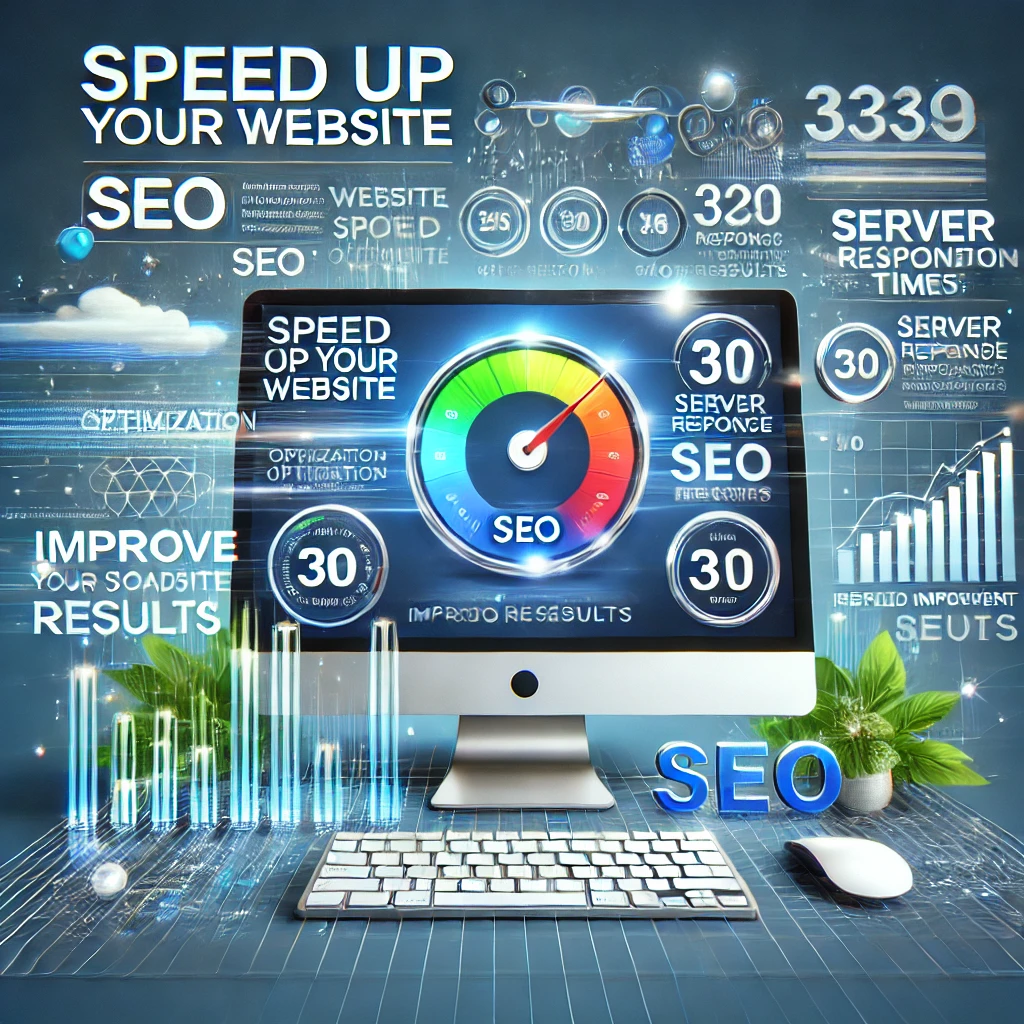Helpful Blogs
How to Speed Up Your Website for Better SEO Results

Website speed is one of the most critical aspects of user satisfaction and SEO rankings. If a website is slow, it can hurt bounce rates, user engagement, and, worse, site rank. Google even confirmed that page speed does affect site ranking, meaning you can improve your chances in SERP if you make changes to increase speed.
In this blog, I’ll explain the importance of SEO website speed and how it affects user experience, sharing practical suggestions to help improve your website speed for better SEO.
Why Website Speed is Important for SEO
1. Fast User Experience
User experience is one of the most critical factors for website success. Internet users expect fast-loading websites, and if your site is slow, they will likely leave before it even finishes loading. Faster websites enhance user satisfaction, increase engagement, and encourage users to stay longer, ultimately leading to more conversions and goals being achieved.
2. Google Uses Page Speed as a Ranking Factor
Google confirmed that page speed is a ranking factor. Websites with slow load times will lag behind faster ones, as Google prioritizes sites that offer a better user experience. Improving website speed can significantly increase your chances of ranking highly on Google’s search results and driving more organic traffic.
3. Lower Bounce Rates and Higher Conversion Rates
If your website takes too long to load, users will likely leave before it finishes. This results in high bounce rates, which negatively impact SEO. Faster websites, on the other hand, have lower bounce rates and higher user interaction, leading to more desirable actions such as purchases or sign-ups.
How to Speed Up Your Website for Better SEO Results
Now that we understand the importance of website speed, let’s look into actionable steps you can implement to improve your website’s speed and SEO results.
1. Optimize Images
Large, unoptimized images are one of the most common reasons for slow website speeds. Compressing and optimizing images is crucial for faster loading times.
To optimize your images:
- Use tools like TinyPNG or ImageOptim to compress images without losing quality.
- Select the correct file format: JPEG for photographs, PNG for graphics with transparency, and WebP for high-quality images with smaller file sizes.
- Remove images that are larger than necessary or don’t fit the dimensions of your website.
2. Enable Browser Caching
Browser caching allows users’ browsers to store static files (like images, CSS, and JavaScript), so they don’t need to be reloaded every time a user visits your site.
To enable browser caching:
- Set expiration dates or maximum times for files in the HTTP headers.
- Use tools like GTmetrix to check if browser caching is enabled.
3. Eliminate Whitespace in CSS, JavaScript, and HTML
Extra whitespace, comments, and unnecessary characters can bloat your CSS, JavaScript, and HTML files, slowing down your website. Minifying these files can improve load times.
To minify your code:
- Use tools like CSSMinifier or JSCompress to minify CSS and JavaScript files.
- Use build systems like Gulp or Webpack to automate the minification process.
4. Set Up a Content Delivery Network (CDN)
A Content Delivery Network (CDN) caches and delivers content from servers located closer to users, improving load times for users worldwide.
To set up a CDN:
- Use services like Cloudflare, Amazon CloudFront, or StackPath.
- Configure the CDN to cache and serve static resources such as images, CSS, and JavaScript files.
5. Streamline the Code of Your Website
A website with clean, well-organized code tends to load faster. Minimizing unnecessary code in HTML, CSS, and JavaScript files can significantly speed up your site.
To optimize your website code:
- Use PurgeCSS to remove unused code.
- Use tools like Gulp or Webpack to merge and minimize multiple CSS and JavaScript files into one file.
6. Use Asynchronous JavaScript Loading
JavaScript can block the rendering of your website, slowing down the page load time. Using asynchronous loading allows JavaScript to load simultaneously with other elements, improving overall load time.
To implement asynchronous loading:
- Add
asyncordeferattributes to your JavaScript script tags in the HTML. - This ensures that JavaScript loads after the main content, improving load times.
7. Improve Server Response Time
Server response time affects how quickly your website loads. Ideally, server response time should be under 200ms. A slow server increases the overall load time of your site.
To improve server response time:
- Choose a reliable web hosting service that provides fast servers and strong uptime.
- Use server-side caching tools like Redis or Varnish to reduce server load and speed up response times.
8. Use Lazy Loading for Videos and Images
Lazy loading delays the loading of images and videos until they are visible in the user’s viewport, improving page load times, especially for media-heavy pages.
To enable lazy loading:
- Use the
loading="lazy"attribute for images. - Implement JavaScript libraries like LazyLoad or Lozad.js for lazy loading.
In Conclusion: Enhance Your Website for Improved SEO Results
Improving website speed is crucial for providing a better user experience and boosting SEO performance. A fast-loading website not only ranks higher in search engines but also increases user engagement, reduces bounce rates, and improves conversion rates.
By following the best practices outlined in this blog, such as optimizing images, enabling browser caching, and using a CDN, you can significantly improve your website’s speed and SEO performance. Remember that website speed optimization is an ongoing process—continuously monitor and improve your site’s performance to stay ahead of the competition.
